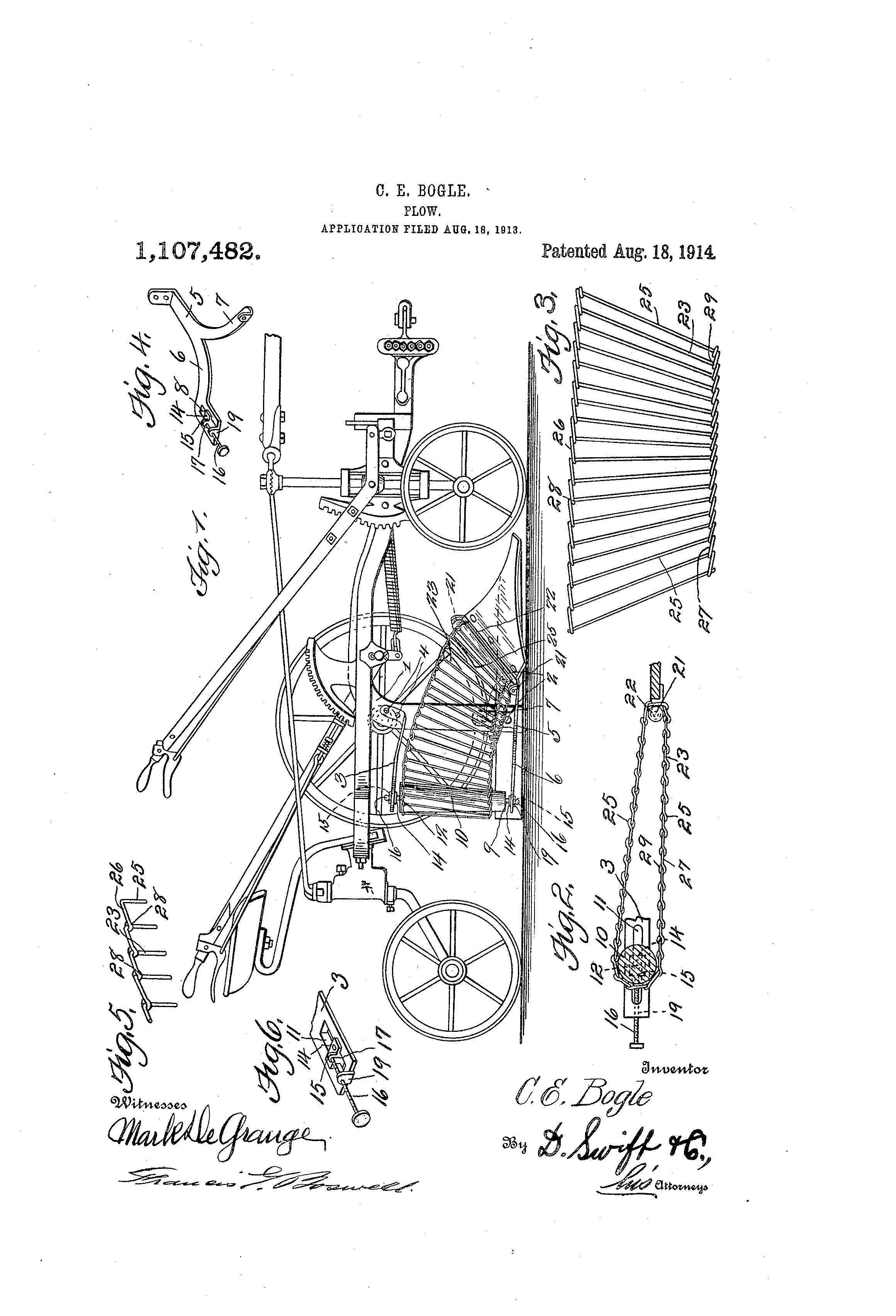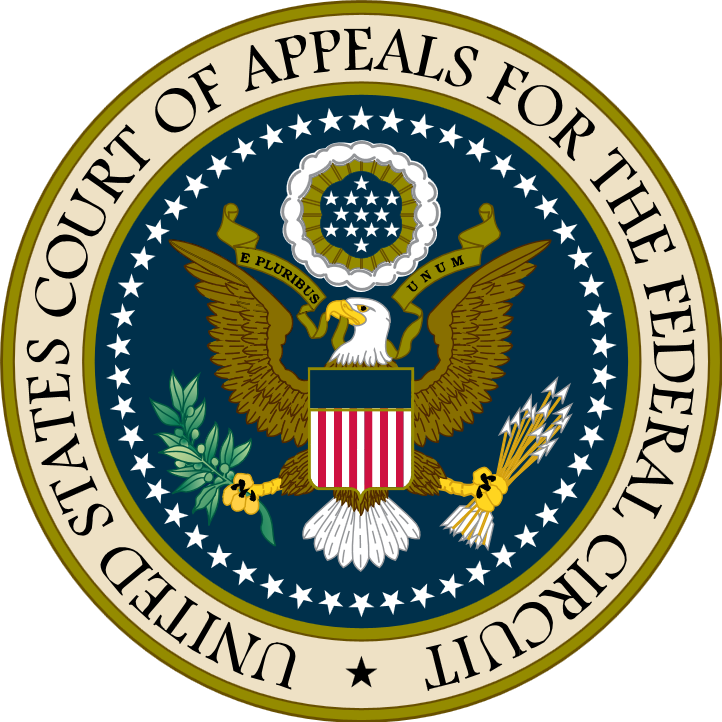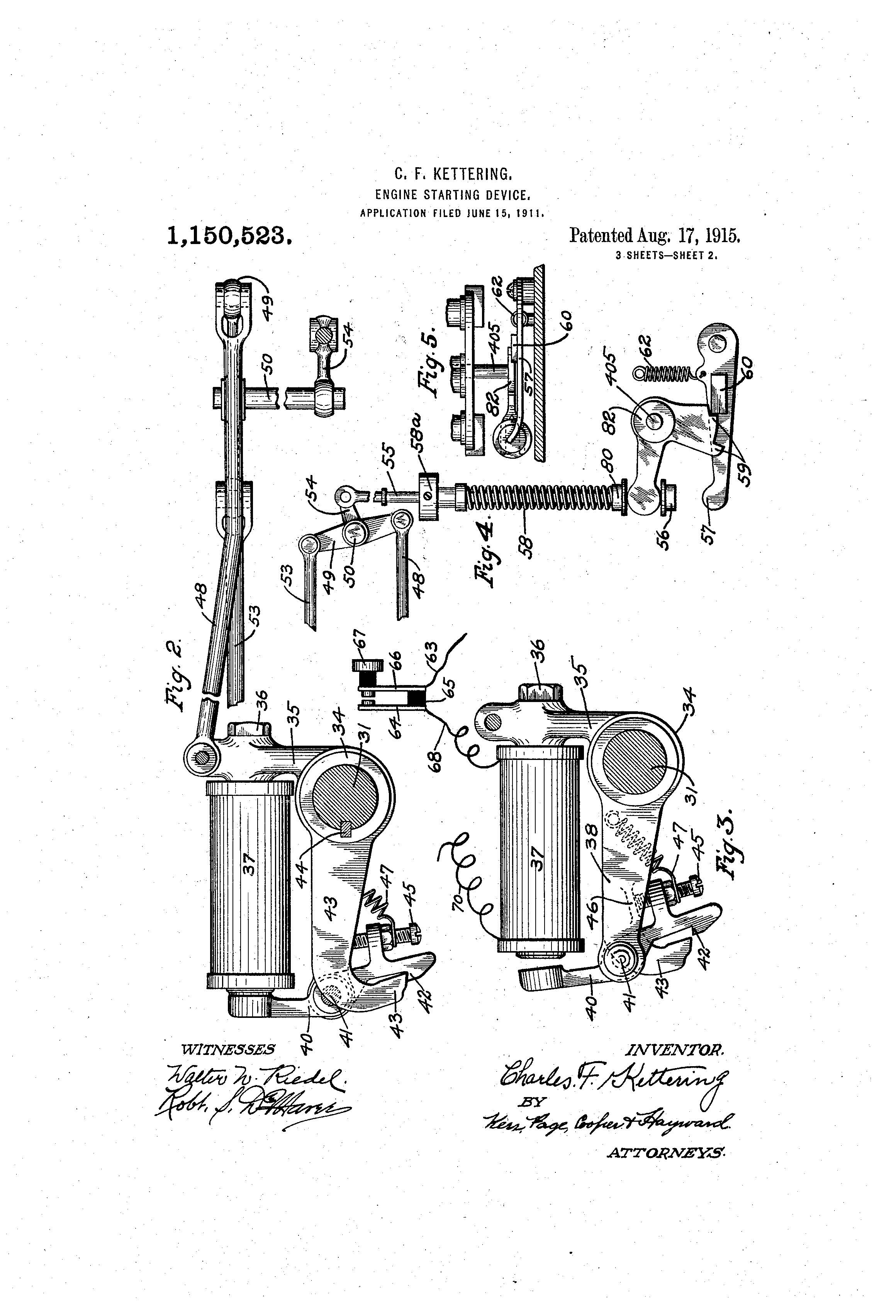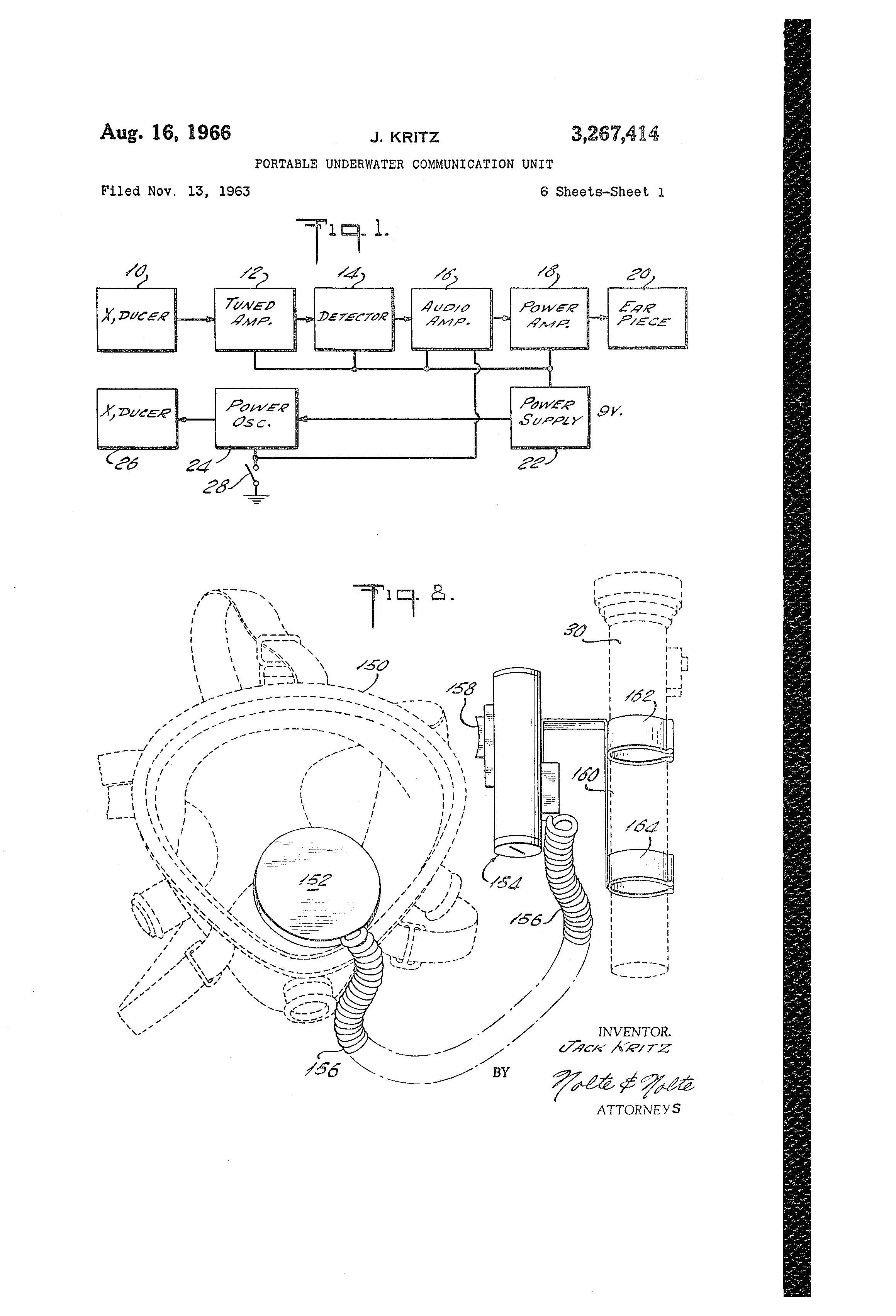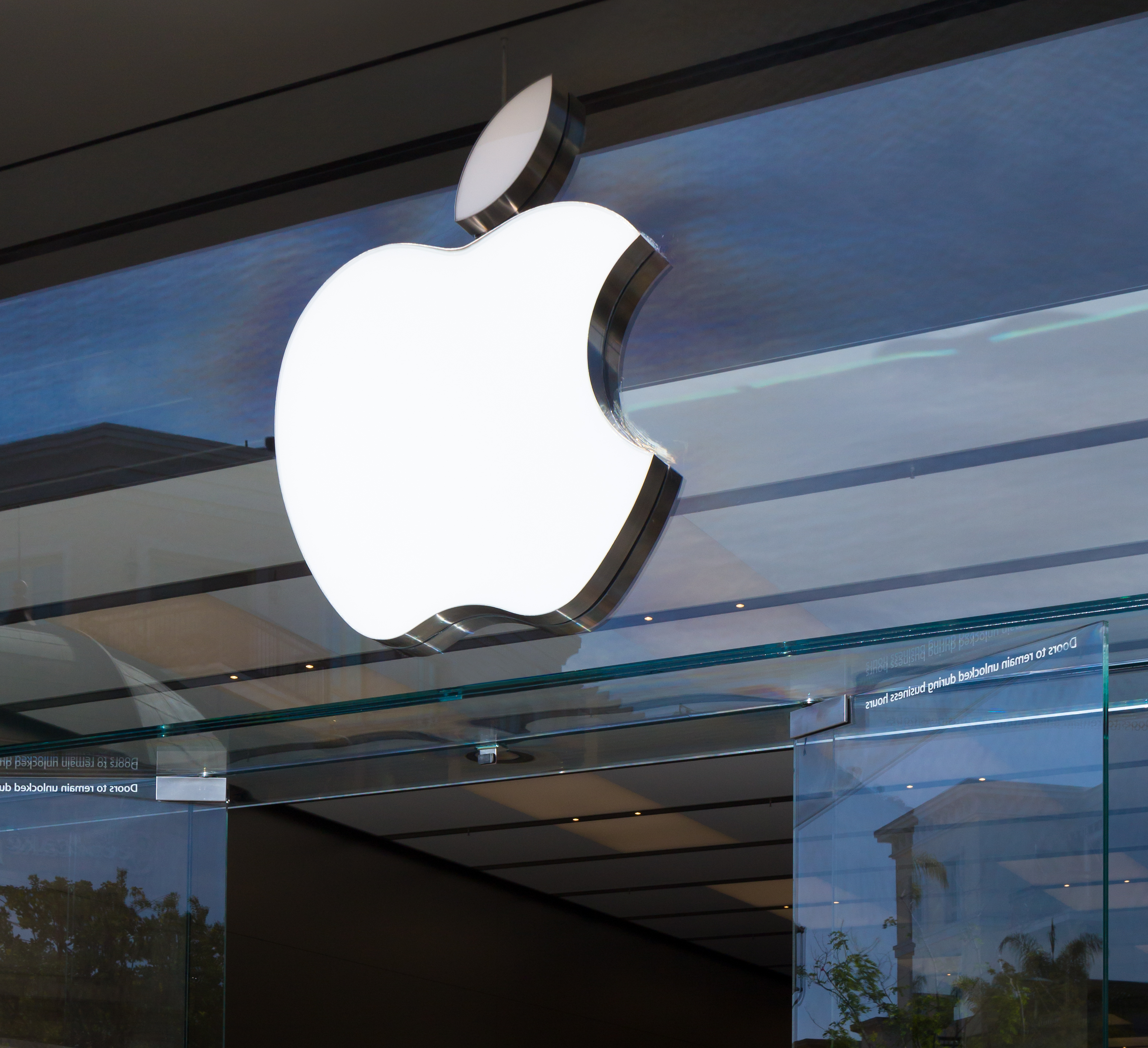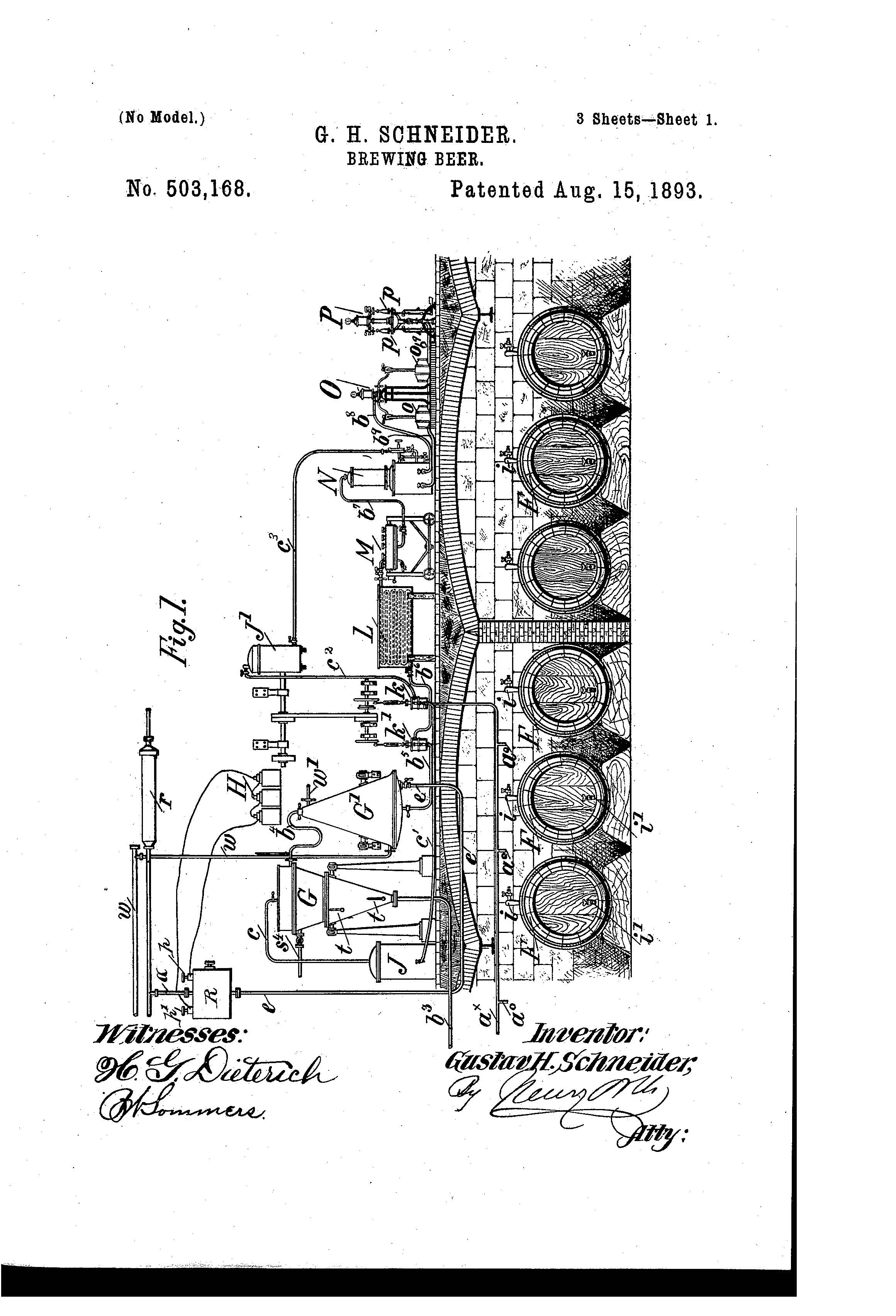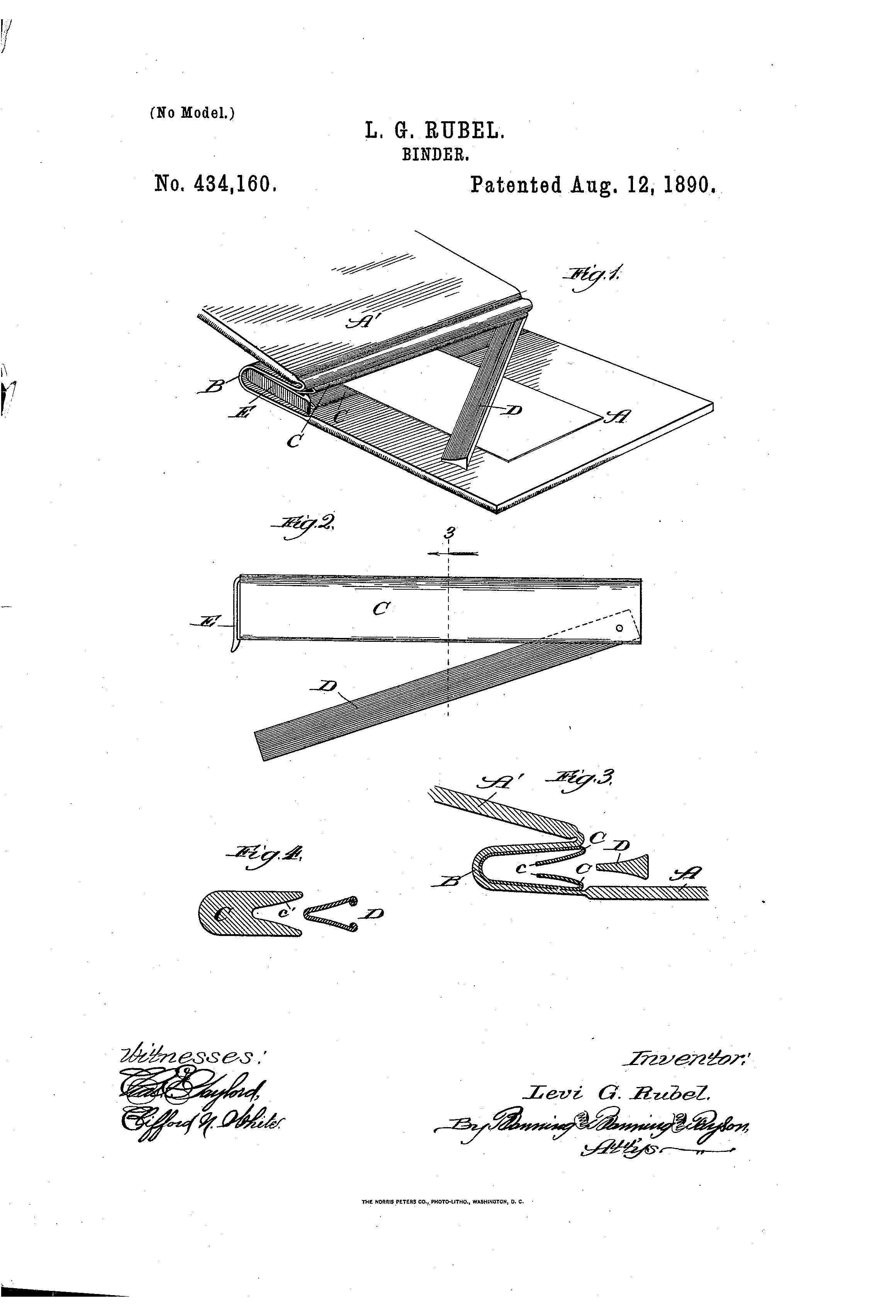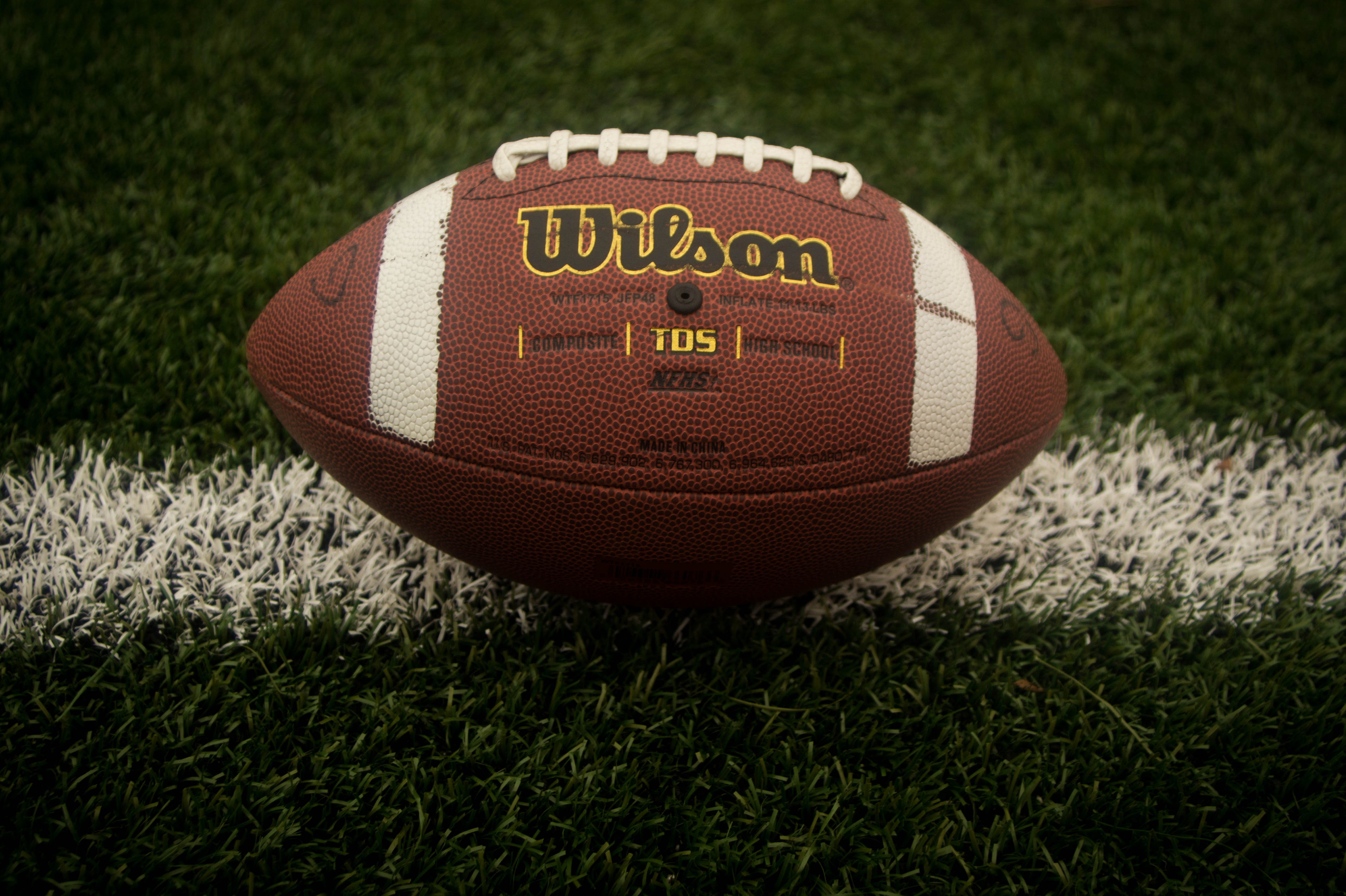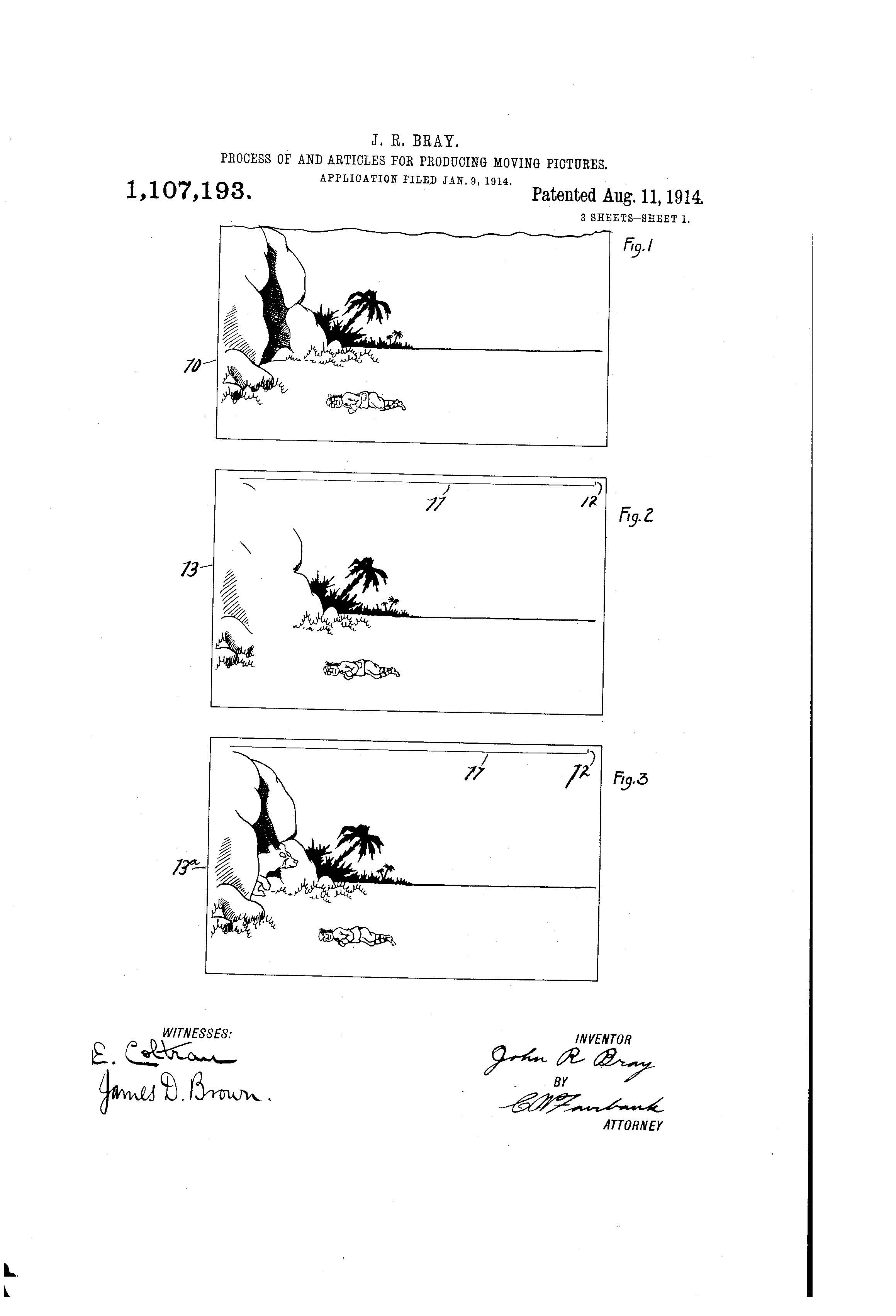Patent of the Day: Plow
On this day in 1914 Curtis E. Bogle was granted the patent for Plow. U.S. Patent No. 1,107,482.
This invention relates to plows, and more particularly to anew and useful improved revolving mold board for facilitating the work of plowing any soil, particularly in gumbo soil.
An object of the invention is the provision of a revoluble mold board, which comprises an endless link belt including a plurality of rods, adapted for traveling rearwardly from the plow share so as to carry the earth backwardly and to one side of the plow, and in so doing the earth becomes thoroughly broken and loose, some of it dropping through the revoluble mold board or belt.

Court Finds that Common Sense is not Always Enough

On August 10, 2016, the United States Court of Appeals for the Federal Circuit (CAFC) reversed a Patent Trial and Appeal Board (PTAB) finding in the case of Arendi S.A.R.L. v. Apple Inc., Google Inc., Motorola Mobility LLC. The PTAB had invalidated an Arendi patent in a decision partially based on so called “common sense”.
The Arendi patent in question, (U.S. Patent No. 7,917,843, claiming 1998 priority), relates to a technology that provides coordination between a first computer program that displays a document and then a second computer program that searches an external source for information based on the contents of the first program while the document is being displayed.
The sole prior art reference on appeal is U.S. Patent No. 5,859,636, which is issued to Pandit. This reference teaches the recognition of different classes of text in a document and gives suggestions based on the recognition. In addition to text recognition, the Pandit patent also covers subject matter related to a program that recognizes phone numbers as a class of text.
In June of this year, the PTAB instituted a review of claims 1, 2, 8, 14-17, 20, 21, 23, 24, 30, 36-39, 40 and 43. In its decision, the PTAB stated “Petitioner submits . . . that Pandit discloses adding an identified number to an address book.” The Board further explained it found Arendi’s argument unpersuasive and instead found it would be “reasonable to presume, as a matter of common sense” that Pandit would search for duplicate phone numbers and information associated with such numbers.
In their final written decision, the Board stated that “it would have been obvious that the first step in adding to an address book is to search the address book to determine if an entry already exists with the entered information and displaying any associated information that is located”.
Arendi argued that there was a lack of evidence to support the Board's common sense findings because the subroutine in the Pandit reference for “Add to address book” would begin with a search for duplicate telephone numbers prior to adding the number to a contact entry in the address book. Rather, Arendi submitted that Pandit was related to text-dependent word recognition.
The CAFC’s decision centers around a single question: whether the Board misused “common sense” to conclude that it would have been obvious to alter the Pandit subject matter to supply the missing limitation in the prior art reference. The CAFC noted that “‘[c]ommon sense has long been recognized to inform the analysis of obviousness if explained with sufficient reasoning.’” The CAFC, warned that in cases where “the missing limitation goes to the heart of an invention,” resorting to common sense needs to be “supported by evidence and a reasoned explanation. [It] cannot be used as a wholesale substitute for reasoned analysis and evidentiary support, especially when dealing with a limitation missing from the prior art references specified”.
The CAFC found that Apple Inc., Google Inc., Motorola Mobility LLC, failed to show the reasoning as to why it would have been common sense to modify Pandit to include the missing limitation. Judge O’Mally with the The Federal Circuit Court wrote:
Rather than clearly explaining with concrete examples what benefit searching for entries with the same number would achieve, Appellees keep returning to their general mantra that Arendi’s argument against searching for a number would apply equally to a search based on a name. Yet the burden is Appellees’ to provide more than a mere scintilla of evidence of the utility of a search for a telephone number before adding the number to an address book, where such a search is not “evidently and indisputably within the common knowledge of those skilled in the art.”
The CAFC concluded:
Because the Board’s presumption that adding a search for phone numbers to Pandit would be “common sense” was conclusory and unsupported by substantial evidence, the missing limitation is not a “peripheral” one, and there is nothing in the record to support the Board’s conclusion that supplying the missing limitation would be obvious to one of skill in the art, we reverse the Board’s finding of unpatentability.
Patent of the Day: Engine Starting Device (First Electric Engine for Automobiles)
On this day in 1915 Charles F. Kettering was granted the patent for Engine Starting Device. U.S. Patent No. 1,150,523.
This invention relates to a system of devices for use in connection with starting mechanisms for engines, and is also applicable to such a system where the engine when started, is adapted to store up power to be used for similar future starting operations and various other purposes.



Patent of the Day: Portable Underwater Communication Unit
On this day in 1966 Jack Kritz, assignor to Janus Products Inc., was granted the patent for Portable Underwater Communication Unit. U.S. Patent No. 3,267,414.
This invention relates to underwater communication equipment. More specifically, this invention pertains to apparatus enabling communication, voice and/or code, between a plurality of underwater divers or between a diver and a vessel. Additionally, the invention contemplates the use of such apparatus as an underwater tracking or homing aid, and for diver location and safety purposes.






Top Fashion Designers Back Apple in Latest Samsung Patent Dispute

Some of the top fashion designers from around the world are coming together to support Apple in its long-running design patent battle with Samsung.
We recently wrote about the smartphone war happening between Apple and Samsung over Samsung’s alleged design imitation. This case is now being taken to the United States Supreme Court where, in October of 2016, justices will determine how much Samsung will be required to pay Apple.
In 2012, a US jury ruled that Samsung had infringed on Apple patents, specifically: Electrical Device D593,087, dealing with the rectangular front face with rounded corners, Electrical Device D618,677, dealing with the bezel and Electrical Device D604,305, dealing with the 4 by 4 grid of colorful icons. The judgement ordered Samsung to pay Apple $930 million. On Appeal, Samsung was able to get the amount reduced to $548 million due to the reversal of a trademark liability ruling. Since that ruling, Samsung has paid Apple a total of $399 million. Samsung argued that the $399 million penalty they have already paid was excessive because "Apple was 'entitled to' those entire profits no matter how little the patented design features contributed to the value of Samsung's phones".
More than 100 top designers and industry professionals from around the world including Calvin Klein, Tiffany & Co., Alexander Wang, and Nicolas Ghesquiere of the French group Louis Vuitton, have filed an amicus brief, a legal document from non-litigants with an interest in the outcome of a case, with the United States Supreme Court in support of Apple’s position that infringers of design patents should have to pay the entirety of its profits as damages.
Although these designers do not stand to gain any compensation in the outcome of this case, they argue that they are filing on the basis of “fundamental principles of visual design,” according to the brief. Further, “[t]he history of industrial design and the experience of America's most profitable industries demonstrate that a product's visual design becomes the product itself in the mind of consumers. It is the design of a successful product that embodies the consumer's understanding of and desire to own and interact with it." Charles Mauro, lead representative of the group, said it “is critical to address the harm caused by design piracy. The total profits rule helps to ensure that designers have the appropriate incentives and rewards to make investments in innovative designs.”
The outcome of this ruling may have a significant impact on the industrial design community and how design patents are used to protect designs in the future.
Patent of the Day: Brewing Beer
On this day in 1893 Gustav Hermann Schneider was granted the patent for Brewing Beer. U.S. Patent No. 503,168.
This invention relates to the art of brewing beer from the wort, and it has for its object the provision of means whereby a product is obtained whose nutritive properties are materially increased, that is not as liable to secondary fermentation and that will keep in good condition for a longer time than beer brewed in the usual way.
One of the advantages of this invention lies in the fact that the fermentation may be interrupted at any time, thereby enabling the brewer to vary the percentage of alcohol in the beer, according to requirements, and consequently preserve to the beer a larger percentage of extracts than has been possible heretofore.
A further advantage of this invention consists in obviating the cellar storage otherwise necessary, and in cheapening considerably the production of beer, notwithstanding that a product is obtained of a taste far more agreeable than that obtained by the old process.



Office Hours August 18 at the Omaha Startup Collaborative
Suiter Swantz IP will be holding office hours August 18th at the Omaha Startup Collaborative, located in the Exchange Building in downtown Omaha.
Matt Poulsen will be there from 1:30-4:30pm. Feel free to send Matt an email (map@suiter.com)if you’d like to reserve a time slot or have any questions. In addition, meeting times can always be made on an as-needed basis.
Suiter Swantz IP
402-496-0300
www.suiter.com
Patent of the Day: Binder
On this day in 1890 Levi G. Rubel was granted the patent for Binder. U.S. Patent No. 434,160.
The object of this invention is to provide a simple, economical, and efficient device for binding and holding separate sheets of paper - such as express-blanks.

New License Agreement reached between Texas A&M and Seattle Seahawks for “12th Man” Trademark

Texas A&M University and the Seattle Seahawks’ football team have reached a new five year license agreement regarding use of the University’s 12th Man trademark.
Texas A&M’s use of the term “12th Man” can be traced back to the January 2, 1922 Dixie Classic game in Dallas, now known as the Cotton Bowl. Due to multiple injuries that had occurred to several A&M regular players, A&M student, E. King Gill, was called out of the stands by Coach Bible. He reported to the sideline and stood ready to play if needed. From that day on, Gill became known as the legendary “12th Man” and as time passed the fans became known as the “12th Man”.
Texas A&M University President Michael Young commented, “We appreciate the Seahawks’ management working with us on a mutual agreement for the licensed use of the mark. The 12th Man is a cherished tradition. Keeping it alive is important because it reflects the willingness and readiness of Aggies to fearlessly step in whenever and wherever needed.”
The Seahawks took to Twitter to announce the new agreement saying “In 1984, the Seahawks became the first pro sports team to retire the number 12 to celebrate our passionate fans. In honor of our long-standing fans, we are happy to announce the extension of our agreement with Texas A&M for the 12th Man trademark.”
Texas A&M’s federal trademark registration for the “12th Man” dates back to 1990, the same year the school filed legal action against the Seahawks for unauthorized use of the trademarked term. In 2006, the University and the Seahawks were able to come to an agreement allowing the Seahawks to use the term.
This agreement has introduced some new stipulations for the Seahawks. According to the agreement, the Seahawks will not be allowed to use the “12th Man” term on their Ring of Honor in CenturyLink Field, nor will they be able to use the term on their social media handles. The team has never been permitted to use the term on any merchandise or outside the territory of the Pacific Northwest.
The Seahawks have used the term “12th Man” less frequently over the years as they are trying to brand themselves as the “12” or similar versions such as “The 12s”, “We are 12s”, which the Seahawks own, or “Spirit of 12” of which they became registered owners in 2008 under their parent company, Football Northwest.
The Seahawks will continue to pay an annual royalty fee for the use of the term and though the fee may not be large, having the contract with the Seahawks will further help to establish the value of the University’s trademark.
Patent of the Day: Process of and Article for Producing Moving Pictures
On this day in 1914, John Randolph was granted the patent for Process of and Article for Producing Moving Pictures. U.S. Patent No. 1,107,193.
By means of this invention it is able to produce on a commercially practical scale a kind of moving pictures which may be designated as animated cartoons to distinguish them from the ordinary moving pictures. In the usual method, the object photographed is in motion and the exposures are made on the film or other sensitized surface with such rapidity that each successive picture shows the object in a slightly advanced position form that which it occupied in the last proceeding picture. As a part of the improved process the photograph is not taken in motion but photograph in succession a series of pictures or drawings which show the object, the successive pictures illustrating the successive positions which the object would take if it were in motion. By rapidly projecting on a screen the photographs of these drawings, the persons, animals, or other objects appear to move in the same manner as they do in the ordinary moving pictures. These animated cartoons differ from the ordinary moving pictures, in that as the drawings may be made from imagination rather than from life, the persons, animals, inanimate objects or the like, may be represented as performing acts as assuming positions and expressions which would be impossible in reality and which may be made extremely amusing and entertaining.



Patent of the Day: Time-Shareable Automatic Bowling Score Computer
On this day in 1976 Raymond Brunson was granted the patent for Time-Shareable Automatic Bowling Computer. U.S. Patent No. 3,974,483.
This invention relates in general to binary number computing devices, and in particular, to an automatic scoring computer for use in the compilation of bowling scores from input information comprising the number of pins knocked down by consecutively rolled balls by any one bowler.
In scoring and compiling performance information in the game of bowling, there is a requirement to produce the following information for each bowler:
1.Total score per frame.
2. Total score per line.
3. Strike request signal per frame.
4. Spare request signal per frame.
5. Frame complete request signal per frame.
6. Line complete request signal per line.
The above information might be obtained from information inputs as to the number of pins knocked down by consecutively rolled balls, by a computing process which follows a program based on manual scoring procedures; that is, conventionally accepting ball score inputs along with inputs concerning strikes and spares rolled. This compilation might be made individually for each bowler by employing highly redundant computing channels, each assigned to a given bowler. This type of compilation would however, necessitate expensive repetition of computing circuits.






Disney Granted a Patent for Foot-Tracking Technology

When most people hear the word “Disney”, they immediately think of entertainment and theme-park vacations – not “innovation”. But in fact, “innovation” is a good word to associate with Disney. The company constantly researches new ideas to improve guest-experience at their parks.
Disney Enterprises, Inc. was granted a patent (US 9,393,697) for a System and Method Using Foot Recognition to Create a Customized Guest Experience. The patent discloses a system to track (acquire and reacquire) guests in different locations of a venue, such as an amusement park. It allows for data collection which could be used to show the amusement park owner the most popular rides or attractions and common traffic patterns between them. The park could then send extra theme-park characters to a busy attraction. The invention gives the amusement park the ability to create a customized experience for a particular guest, such as to have theme-park characters greet a guest by name and to create photos for guests on rides or as they travel through the park. The same data could be used by marketing to tailor marketing efforts based on preferences.
The advantage of using a foot tracking method over the current tracking methods is that it is less invasive. Current methods that are available, such as facial recognition and fingerprints can be deemed “obtrusive” and may be looked upon unfavorably by theme-park guests. Furthermore, these are unreliable methods because guests often wear sunglasses and other accessories that block detection. Less invasive methods, namely, comparing clothing, are unreliable for similar reasons.
The invention includes a foot detecting system that uses foot sensors to capture foot shape and a camera to capture images of a foot, shoe, or the bottom portion of a person’s legs. The system creates a foot descriptor stored in a database with additional information about the guest (e.g., name, interests, and hometown). Acquisition stations containing foot sensors and cameras, connected to the same database, would be located around the amusement park in either fixed structures or in robots that roam around an area.
It was reported that Disney stated it has no plans in the near future to use such a system. This is one of a number of ongoing innovative research projects. One innovation currently implemented by Disney is the MagicBand. MagicBands are brightly colored bracelets fitted with an RFID chip and function as park tickets, hotel keys, a method of payment for food and merchandise, and can be connected to FastPasses.

